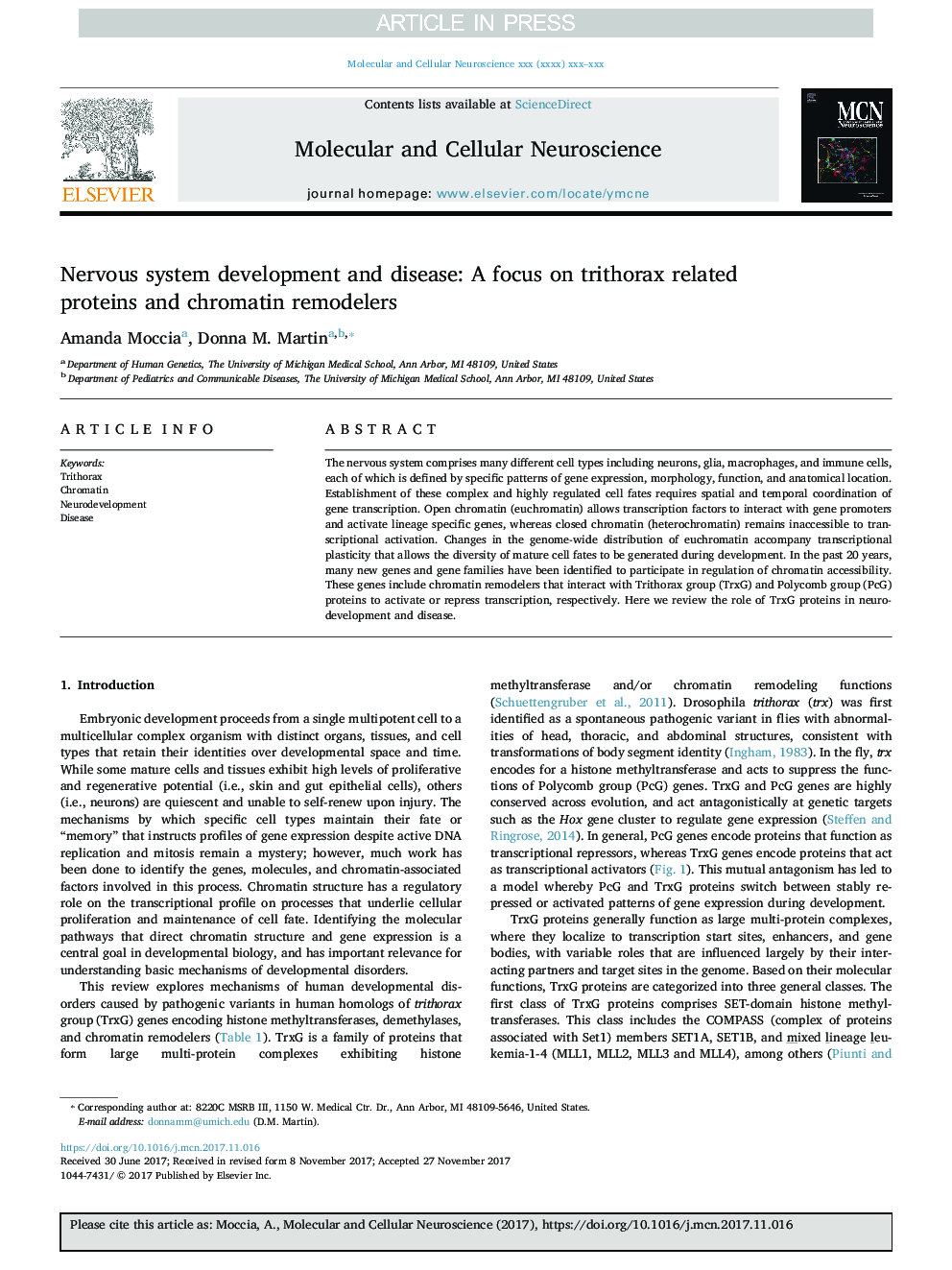| Article ID | Journal | Published Year | Pages | File Type |
|---|---|---|---|---|
| 8478403 | Molecular and Cellular Neuroscience | 2018 | 9 Pages |
Abstract
The nervous system comprises many different cell types including neurons, glia, macrophages, and immune cells, each of which is defined by specific patterns of gene expression, morphology, function, and anatomical location. Establishment of these complex and highly regulated cell fates requires spatial and temporal coordination of gene transcription. Open chromatin (euchromatin) allows transcription factors to interact with gene promoters and activate lineage specific genes, whereas closed chromatin (heterochromatin) remains inaccessible to transcriptional activation. Changes in the genome-wide distribution of euchromatin accompany transcriptional plasticity that allows the diversity of mature cell fates to be generated during development. In the past 20Â years, many new genes and gene families have been identified to participate in regulation of chromatin accessibility. These genes include chromatin remodelers that interact with Trithorax group (TrxG) and Polycomb group (PcG) proteins to activate or repress transcription, respectively. Here we review the role of TrxG proteins in neurodevelopment and disease.
Related Topics
Life Sciences
Biochemistry, Genetics and Molecular Biology
Cell Biology
Authors
Amanda Moccia, Donna M. Martin,
